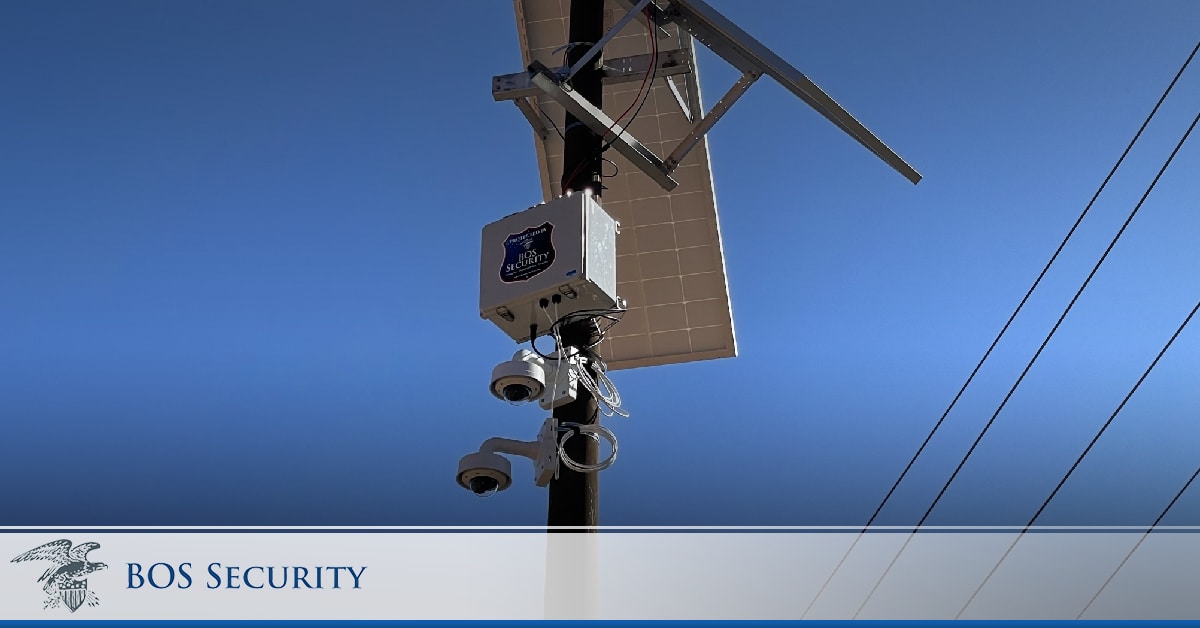Are you seeking a comprehensive security solution that combines advanced technology with human expertise for maximum protection? Look no further; Security Camera Monitoring Service offers a versatile and effective approach to safeguard your property, business, and loved ones. In this blog post, we’ll delve into how this security camera monitoring service deters criminals, provides real-time monitoring, and integrates cutting-edge AI technology for a proactive security strategy. Let’s explore the power of Security Camera Monitoring Service and how it can elevate your safety measures.
Key Takeaways
- Security camera monitoring services offer enhanced safety and crime prevention with real-time monitoring, facial recognition, motion detection & alerts.
- Remote video surveillance provides 24/7 coverage for cost-effective security solutions that are scalable and flexible to meet specific needs.
- Integrating a new system must consider legal & privacy regulations to ensure maximum effectiveness while protecting individual rights.
The Power of Security Camera Monitoring Services
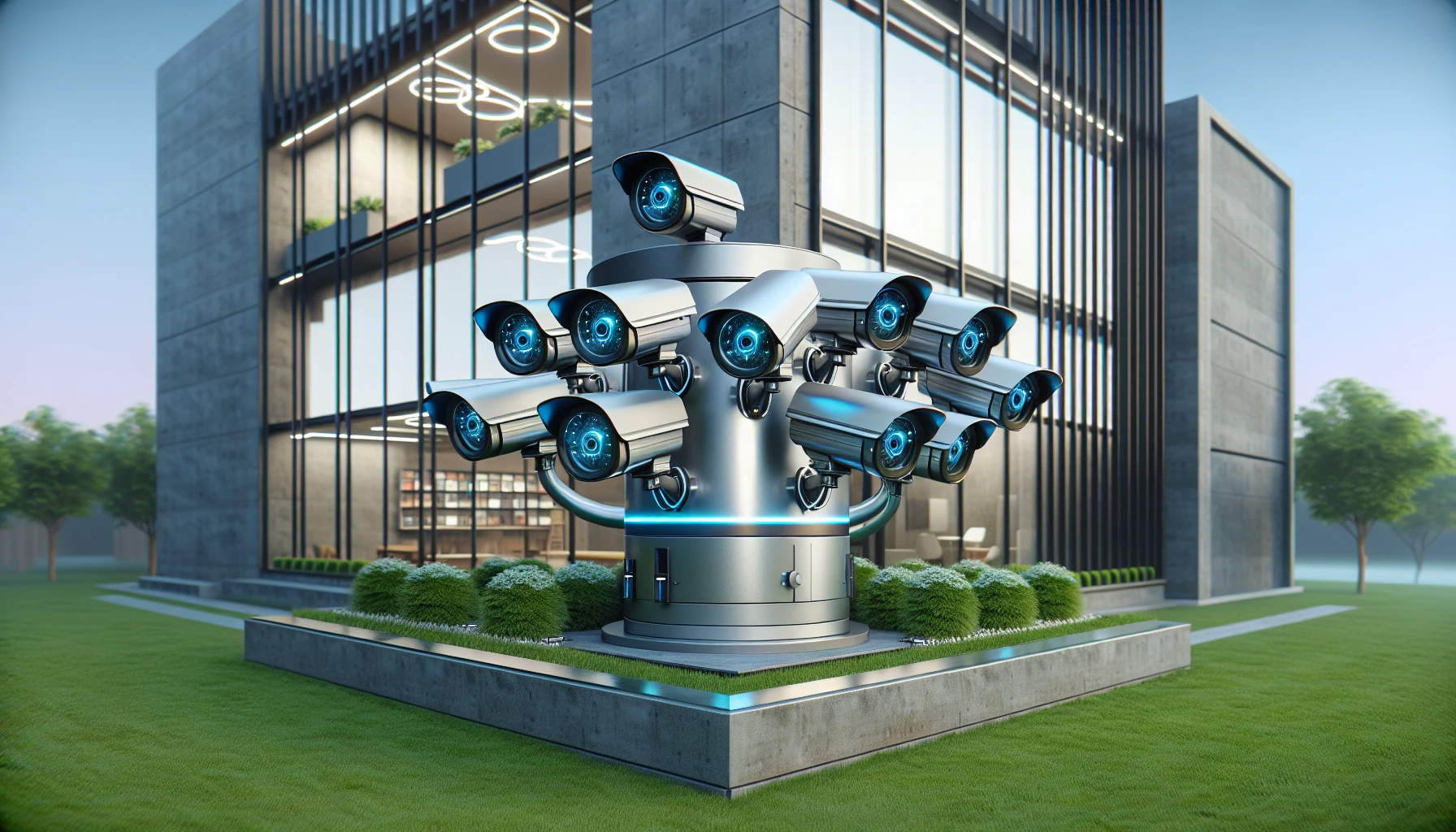
Imagine a world where technology and human expertise work hand-in-hand to ensure the safety of your home or business. Security camera monitoring services provide just that by combining advanced video surveillance cameras with trained security professionals, offering enhanced safety and crime prevention for businesses and homes. These services provide a heightened sense of safety for personnel, patrons, and visitors, reducing the need for multiple security guards.
Not only do security camera monitoring services deter criminals, but they also facilitate real-time monitoring for swift response to potential threats. Such services guarantee prompt incident resolution and provide video verification to law enforcement when necessary. Integrating new devices into existing physical security systems elevates safety and cost-efficiency, complemented by the around-the-clock availability of dedicated trained security professionals for effective monitoring.
How Security Cameras Deter Criminals
The presence of security cameras acts as a psychological deterrent to potential criminals, making them think twice before engaging in criminal activities. Criminals are aware that their actions are being monitored by video cameras and that the footage can be used as evidence against them. This heightened sense of surveillance reduces the likelihood of theft, vandalism, and other criminal activities, ultimately making your property and its occupants safer.
Additionally, the psychological impact of surveillance cameras diminishes the requirement for onsite security guards, given that visible security measures often dissuade criminals from targeting certain properties. Studies have shown that CCTV, as a part of a video monitoring service, can be an effective deterrent for crime. As a result, security cameras are a powerful tool for crime prevention and enhanced safety.
Real-Time Monitoring for Immediate Response
Security camera monitoring services provide the following benefits:
- Real-time monitoring, enabling instant response to potential risks
- Guaranteeing the protection of individuals and assets
- Two-way speaker and microphone systems, allowing security personnel to engage in real-time crime intervention and communication with individuals on the premises.
Companies like BOS Security pride ourselves on having the quickest response times in the industry, with rapid police contact. Such immediacy enables security personnel to adopt a proactive stance in property protection and crime prevention, as opposed to a reactive one.
The security feature, Active Interception, which facilitates live interaction and real-time notifications, guarantees constant vigilance of your security system, prepared to tackle potential threats.
Enhanced Safety Measures
Security camera monitoring services offer a range of advanced safety features, such as facial recognition, smart cameras with PTZ (pan-tilt-zoom) and smart tracking capabilities, and the detection of trespassers and unauthorized visitors. Facial recognition in security cameras augments safety, verifying individual identities, enhancing threat identification accuracy, and minimizing false alarms by differentiating between known and unknown faces.
Access control in security camera systems refers to the ability to restrict access to authorized individuals only, through the use of various methods such as:
- Key locks
- Access terminals
- Card readers
- Biometric readers
- Intercoms
The implementation of access control can bolster security, prevent unauthorized access, increase accountability, limit access to sensitive areas, and harmonize with other security measures.
These enhanced safety measures contribute to deterring crime and creating a more secure environment for your property and its occupants.
Remote Video Surveillance: A Proactive Approach
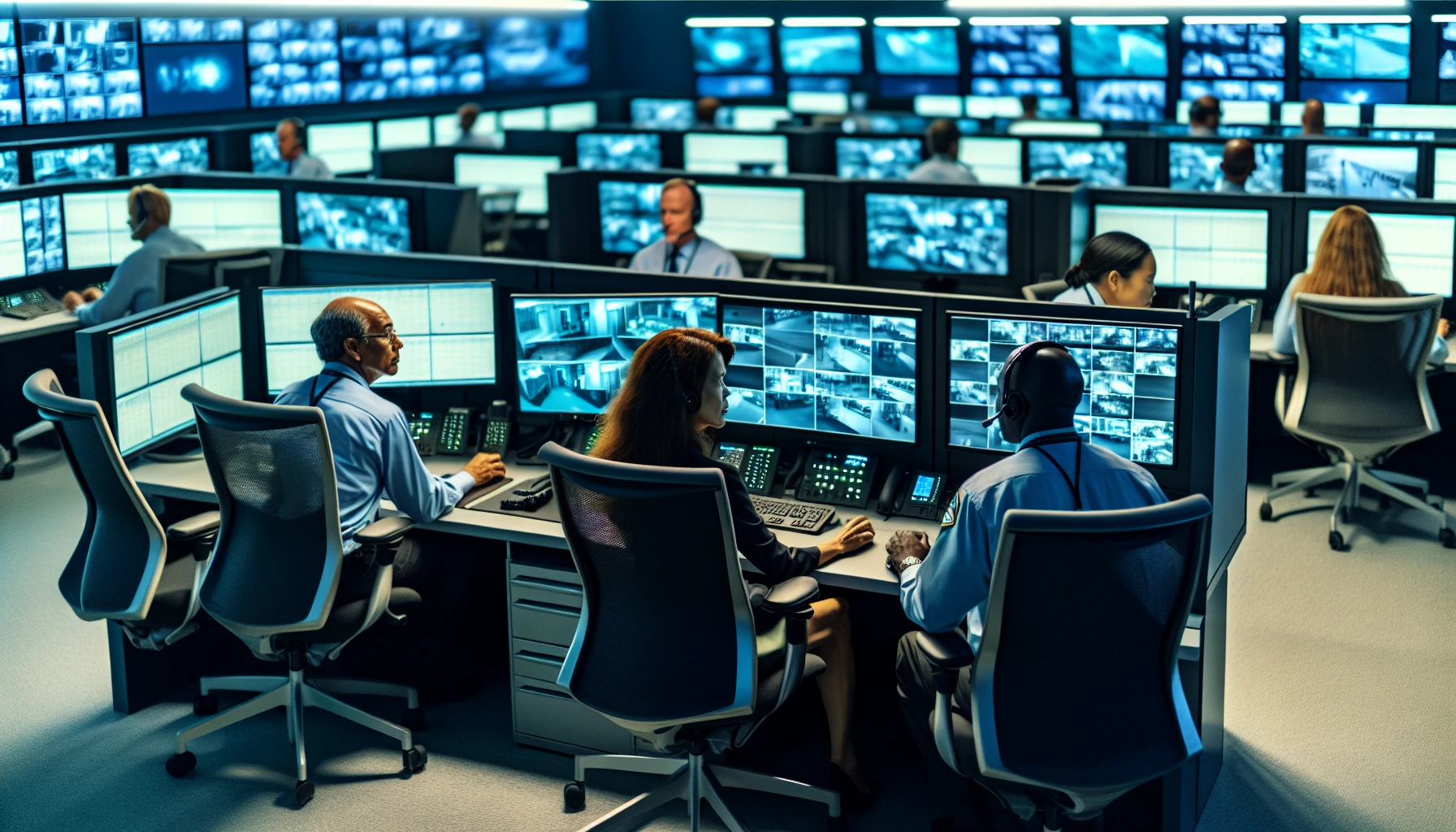
Offering 24/7 coverage and the capacity for timely incident response, remote video surveillance serves as a proactive security solution. Unlike passive systems that only offer stored video footage, remote video surveillance allows for immediate response to threats, ensuring the safety of people and property.
Remote video surveillance employs a proactive security approach, utilizing an array of tools like:
- Two-way speakers for premise personnel communication
- Motion detection and alerts
- Facial recognition and access control
- Predictive analytics
This comprehensive coverage ensures that your property is protected at all times, allowing you to focus on what matters most.
Cost-Effective Security Solutions
Remote video surveillance is a cost-effective security solution, offering comprehensive protection without the need for on-site security personnel. VirtuGuard™, for example, does not require long term contracts for businesses when selecting their live video monitoring services.
Furthermore, the deployment of a system akin to VirtuGuard™ proves to be considerably more cost-efficient compared to the hiring of extra onsite guards. Remote video surveillance systems typically have lower maintenance costs in comparison to traditional security systems, as they require less physical maintenance and offer remote troubleshooting and software updates. However, it is essential to consider potential additional fees associated with the setup of a remote video surveillance system, such as:
- Maintenance of the NVR/DVR
- Specialized servicing
- Retrieval of footage
- Cybersecurity costs
Scalability and Flexibility
Security camera monitoring services, being scalable and flexible, can be custom-fitted to cater to the specific needs of any business or property. Scalability in security camera monitoring services indicates the capability of the system to process a growing number of cameras and data without affecting performance or functionality. This implies that the system can be easily scaled up to accommodate extra cameras and storage capacity as the demand for surveillance increases.
With a scalable system, businesses can add more cameras and devices as needed, ensuring comprehensive coverage of their premises and effective monitoring of their surroundings. Moreover, scalability enables businesses to seamlessly integrate new technologies and features into their security camera system, thus enhancing their overall security capabilities.
24/7 Coverage for Maximum Protection
Providing constant surveillance and protection, 24/7 coverage is a vital aspect of security camera monitoring services. This ensures a prompt response to any security incidents or threats, regardless of the time of day. This steady monitoring helps to deter criminal activity, provide evidence in case of incidents, and ensure the safety and security of the premises at all times.
Furthermore, security camera monitoring services provide:
- Continuous monitoring by seasoned security personnel
- Improved security and deterrence of crime
- Peace of mind knowing that your property is protected at all hours.
Integrating AI Technology into Security Camera Monitoring
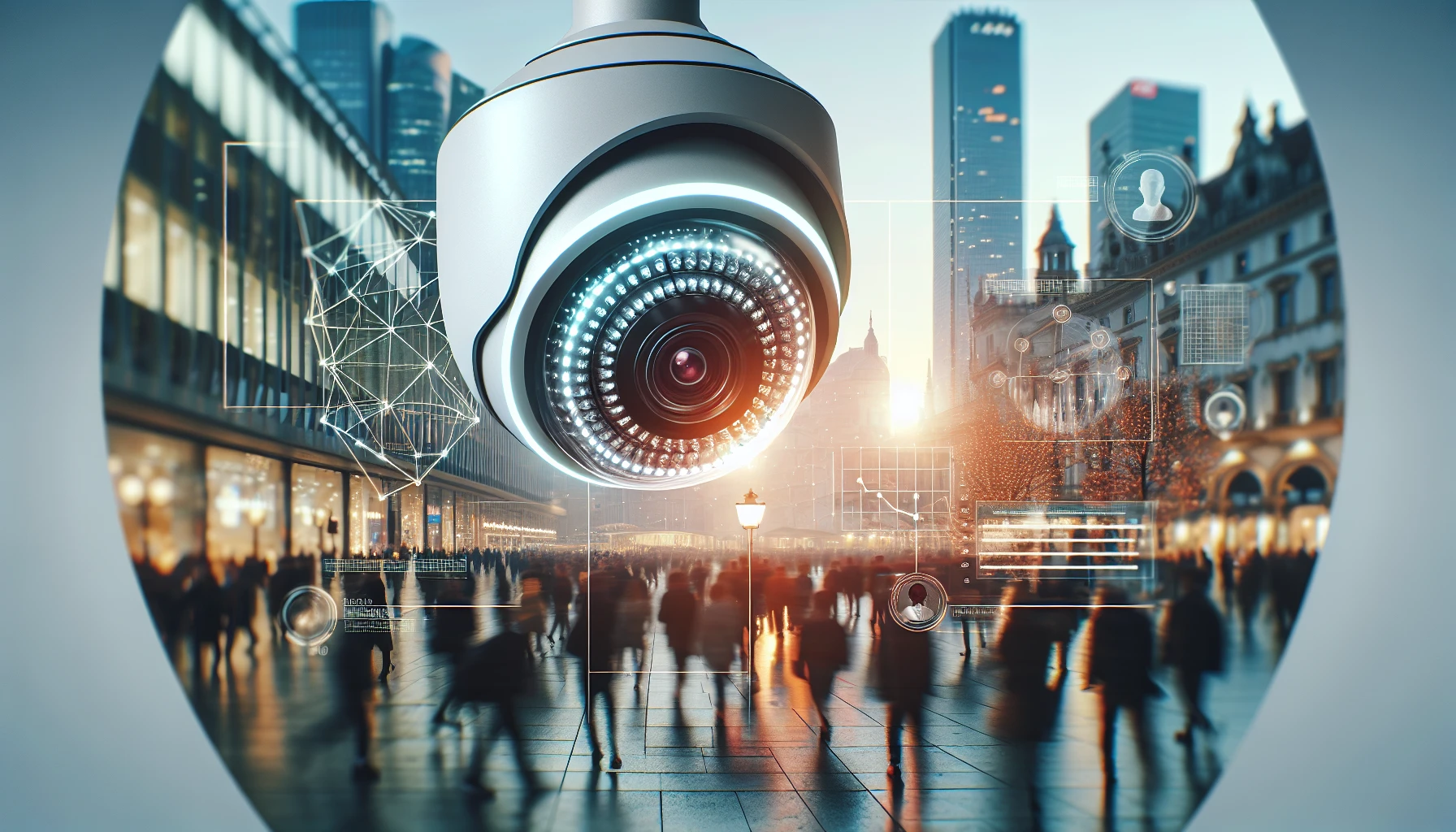
Artificial intelligence (AI) is transforming the scope of security camera monitoring, enriching service capabilities with advanced features like motion detection, facial recognition, and predictive analytics. AI technology ensures properties remain safe, secure, and operational with remote video monitoring, as seen with VirtuGuard’s sophisticated camera systems.
AI integration with cameras amplifies their capabilities, empowering them to discern subtle movements that might elude the human eye. This increases the system’s efficacy, helping to prevent crime and ensure safety.
Motion Detection and Alerts
Motion detection in security cameras works by keeping track of video feed variations or identifying movement within a designated area. There are various technologies used for motion detection, including pixel comparison, passive infrared (PIR) sensors, and heat detection. These technologies analyze the discrepancies in pixels or detect alterations in heat signatures to identify motion. Upon motion detection, the security camera can activate alerts, initiate recording, or execute other predetermined actions.
Security cameras are equipped with motion sensors that detect movement and send push notifications to connected devices such as smartphones. Through a dedicated app or software, users can receive real-time notifications and view the captured footage to assess the situation. This allows for prompt response and immediate action to be taken, ensuring the safety and security of your property.
Facial Recognition and Access Control
In security cameras, facial recognition technology functions by:
- Recording and scrutinizing facial features for identification and safety purposes
- Mapping the facial identity of an individual and verifying their identity by comparing it to a database of known faces
- Tracking individuals’ movements and monitoring their activities
- Identifying individuals in private settings
The use of facial recognition in security cameras provides increased safety by verifying the identities of individuals, improving accuracy in identifying potential threats, and reducing false alarms by distinguishing between familiar and unfamiliar faces. Furthermore, facial recognition technology can be utilized to improve access control in security camera systems, preventing unauthorized access and enhancing the overall security of a property.
Predictive Analytics for Proactive Security
Predictive analytics, in the context of security camera monitoring, employs data from video footage and past incidents to discern patterns, anomalies, and potential security threats. By utilizing advanced algorithms and artificial intelligence, predictive analytics can enhance decision-making, offer valuable insights, and reduce the dependence on manual monitoring tasks. This involves analyzing video streams, isolating critical components, and utilizing machine learning to identify, extract, classify, and index objects in the footage.
Predictive analytics is highly efficacious in proactive security measures, facilitating organizations to analyze historical data, recognize patterns and trends, and estimate the probability of cyber threats or fraudulent activities. By capitalizing on data-driven insights, organizations can take proactive measures to reduce risks and avert attacks prior to their occurrence. This proactive approach shifts from the traditional reactive mode to a more strategic and preventive security strategy.
Choosing the Right Security Camera System
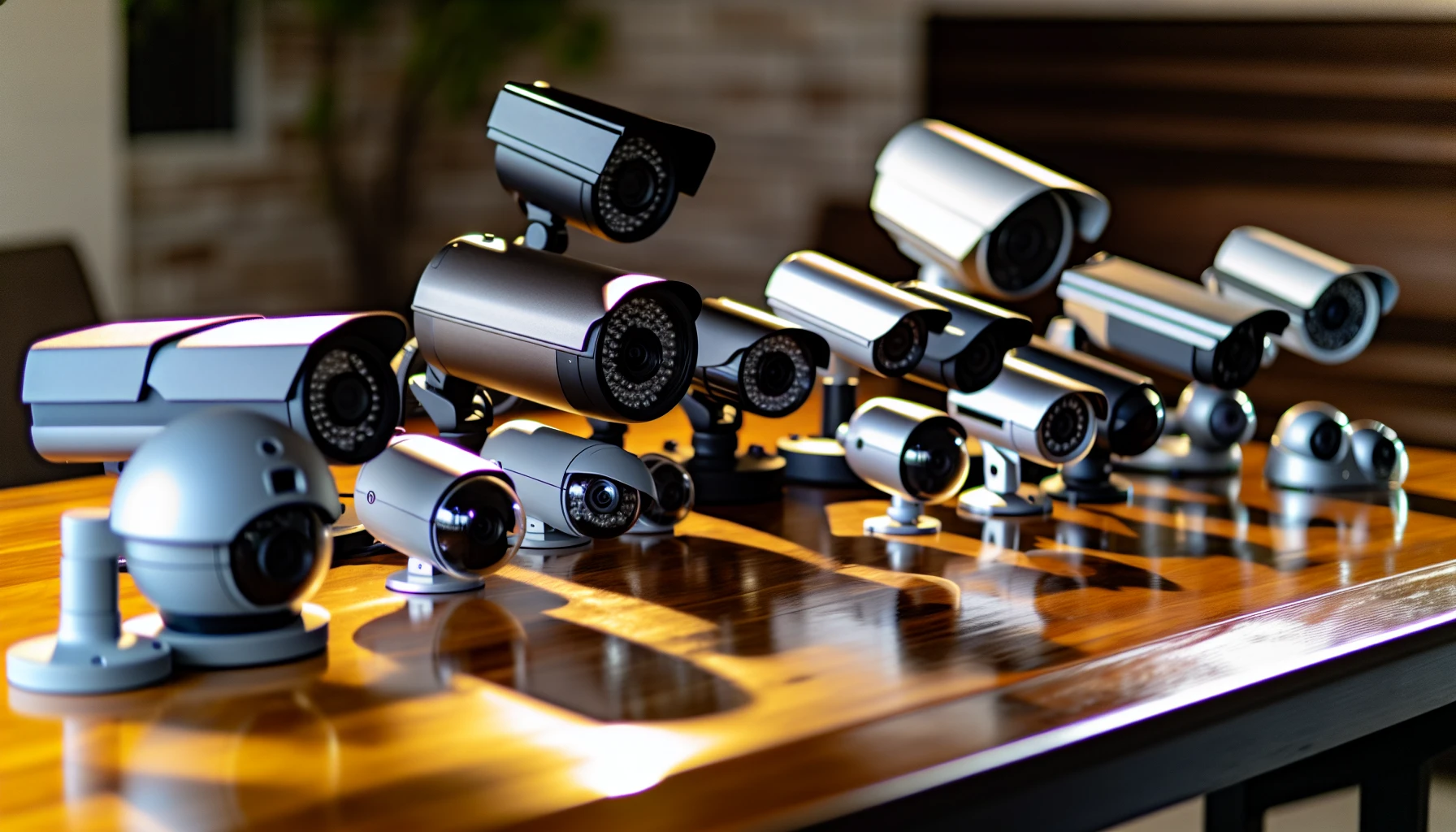
Choosing a security camera system that aligns with your needs is a crucial decision. There are several factors to consider, such as:
- Camera types
- Resolution
- Storage options
- Integration with existing security systems
By taking these factors into account, you can make an informed decision and choose the best security camera system for your property or business.
The following sections further explore these factors, providing guidance in selecting a security camera system that best meets your specific needs and requirements.
Camera Types and Features
A variety of security cameras are available, each offering unique features and capabilities. When selecting a security camera, it is crucial to consider factors such as:
- Indoor/outdoor usage
- Wired/wire-free
- Video resolution
- Motion sensing
- Two-way audio
- Field of view
- Night vision
- Power source
- Local/cloud storage
Some camera types include dome cameras, bullet cameras, and PTZ cameras, each with their advantages and disadvantages. Understanding these differences and the features offered by each camera type will help you make the best choice for your security needs.
Resolution and Image Quality
Resolution significantly impacts the efficacy of security cameras by determining the clarity and detail of the captured images and videos. Higher resolution cameras can capture more details, which can aid in the identification of faces, objects, and events. Lower resolution cameras may have reduced image quality and may not provide clear visuals in certain situations.
It is typically recommended to use 4K resolution (3840 x 2160p or approximately 8MP) for security cameras, ensuring the best quality for your video camera footage.
Using higher image quality provides the following benefits:
- Clearer and more detailed visuals, allowing security personnel to identify potential threats more accurately
- Improved image quality facilitates the detection of suspicious objects or behaviors
- Enhances the efficacy of security monitoring systems
Storage Options: Local Server vs. Cloud Storage
Two main options are available for storing your security camera footage: local server storage and cloud storage. Local server storage offers rapid streaming, independence from internet connection, and lower initial expenses. However, it is limited in storage capacity and susceptible to physical damage or theft.
Cloud storage, on the other hand, provides convenient and secure data storage, remote access, and eliminates the need for physical storage devices. Although cloud storage requires a reliable internet connection and monthly subscription fees, it offers a more flexible and accessible storage solution compared to local server storage.
Integration with Existing Security Systems
Ensuring seamless integration with existing security systems is vital when implementing a new security camera system. This will ensure that your new cameras work in harmony with your current security measures, maximizing the effectiveness of your security camera monitoring services.
The integration process typically involves:
- Connecting the systems and applications to a central hub or platform
- Carefully considering the objectives, physical factors, optimal coverage, privacy, and compliance
- Evaluating integration capabilities
By following these steps, you can successfully integrate new security cameras with your existing security systems for a comprehensive and efficient security solution.
Case Studies: Security Camera Monitoring Services in Action
Real-world instances of security camera monitoring services demonstrate their efficacy in crime prevention and safety enhancement. Research has demonstrated that security camera monitoring services installed in schools can reduce instances of bullying by up to 70%. Moreover, the presence of security cameras serves to deter unauthorized individuals from accessing school grounds.
Businesses have also seen significant advantages from security camera monitoring services, such as deterring employee theft, monitoring workflow, and detecting and responding to issues instantly. These benefits are integral to ensuring the overall safety and security of businesses, optimizing operations, and minimizing losses due to theft or other incidents.
Legal and Privacy Considerations
In the implementation of security camera monitoring services, it is crucial to consider legal and privacy aspects, ensuring compliance with pertinent laws and regulations, and respecting individual privacy. When implementing security camera monitoring, it is important to consider the following issues:
- Invasion of privacy
- Surveillance abuse
- Data security
- Consent and notification
- Retention and storage
To ensure compliance with the General Data Protection Regulation (GDPR) when using security cameras, it is recommended to:
- Inform individuals that they are being recorded and clearly state the purpose of the CCTV system.
- Limit access to the CCTV footage to authorized individuals.
- Delete the footage within a reasonable timeframe, considering the purpose for which it was collected.
Summary
In conclusion, security camera monitoring services offer a powerful combination of advanced technology and human expertise to provide enhanced safety and crime prevention for businesses and homes. With features such as real-time monitoring, AI integration, and 24/7 coverage, these services offer a proactive approach to security that can be tailored to meet the unique needs of any property or business. By carefully considering factors such as camera types, resolution, storage options, and integration with existing security systems, you can make an informed decision and choose the best security camera system for your needs.
Frequently Asked Questions
What are some examples of security camera types and features?
Popular security camera types include dome cameras, bullet cameras, and PTZ cameras, each with features such as indoor/outdoor usage, video resolution, motion sensing, two-way audio, field of view, night vision, power source, and local/cloud storage.
What is the importance of resolution in security cameras?
High resolution security cameras are essential in accurately capturing and identifying faces, objects, and events, providing greater security.
What are the benefits of integrating AI technology into security camera monitoring services?
AI technology integrated into security camera monitoring services provide features such as motion detection, facial recognition, and predictive analytics, improving the efficiency of security surveillance.
How can remote video surveillance systems be cost-effective compared to traditional security systems?
Remote video surveillance systems are cost-effective compared to traditional security systems due to lower maintenance costs, remote troubleshooting, and fewer onsite guards needed.
What are the legal and privacy considerations when implementing security camera monitoring services?
When implementing security camera monitoring services, one must ensure compliance with laws and regulations, such as the GDPR, as well as address concerns over invasion of privacy, surveillance abuse, data security, consent and notification, and retention and storage.
